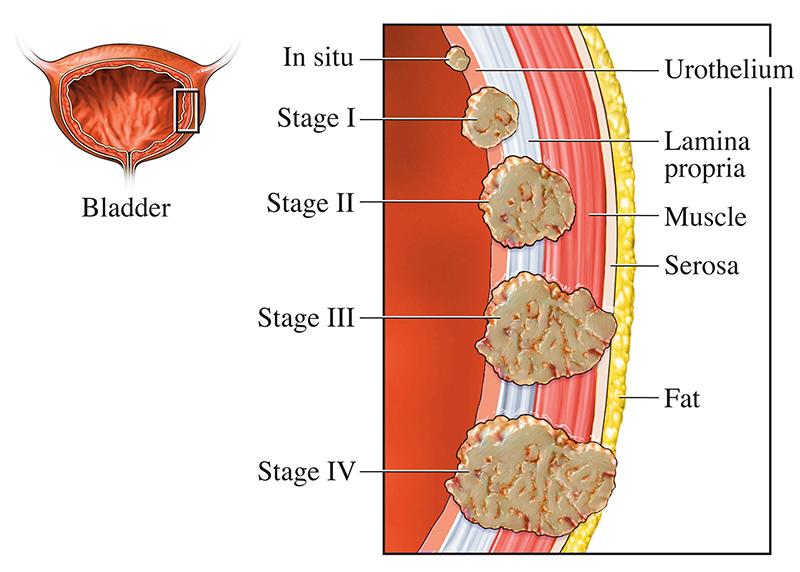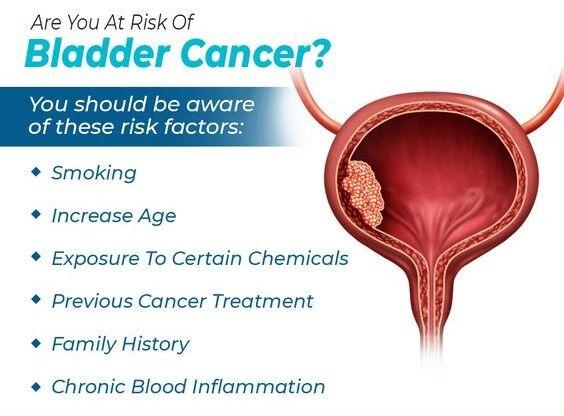Bladder Cancer Explained: Important Insights You Need to Know

Important Insights & Cancer Discussions: Bladder cancer often receives less attention than it deserves. However, this sneaky culprit claims thousands of lives each year. So, shall we dive into the worldwide epidemic of bladder cancer? Grab a cup of coffee (or tea, we don’t judge) and let’s go on this educational journey together.
What is Bladder Cancer?
Bladder cancer occurs when cells in the bladder, a balloon-shaped organ nestled in your lower abdomen, go rogue, multiplying uncontrollably and forming tumors. Here are the different types of bladder cancer:
But not all bladder cancers are created equal. Let’s break down the types:
Urothelial Carcinoma: The most common type, making up about 90% of all bladder cancers. It starts in the urothelial cells lining the bladder.
Squamous Cell Carcinoma: The rare breed, often showing up after long-term irritation or infection.
Adenocarcinoma: An uncommon type, developing from glandular cells in the bladder lining.
Small Cell Carcinoma: The speed demon of bladder cancers – rare but aggressive.
Sarcoma: The muscle man of bladder cancers, starting in the muscle cells.
Bladder Cancer: The Sneaky Invader
Bladder cancer isn’t content with just hanging out on the surface. It can be classified based on how far it’s invaded:
Non-Muscle-Invasive Bladder Cancer (NMIBC): Early-stage cancer, representing about 70-75% of diagnoses.
Muscle-Invasive Bladder Cancer (MIBC): The advanced explorer, making up 25-30% of cases.

Spotting the Symptoms: When Your Bladder Tries to Tell You Something
Your body has a way of waving red flags when something’s amiss. Here are some symptoms to watch out for:
Blood in the urine: The most common first sign. Ladies, don’t brush this off as a “women’s issue”!
Pain or burning sensation during urination: Because peeing shouldn’t feel like a punishment.
Weak urine flow: When your stream becomes more of a trickle.
Urgency to urinate: Even when your bladder’s as empty as a politician’s promise.
Increased urination frequency: If you’re making more trips to the loo than usual.
Pain in the lower back or pelvic area: Your body’s way of saying, “Hey, something’s not right down here!”
Fatigue: When your get-up-and-go has got-up-and-gone.
Swelling in the feet: Because who doesn’t love surprise ankle puffiness?
Loss of appetite and unexplained weight loss: When your favorite foods suddenly lose their appeal.
Risk Factors: The Usual Suspects
While we can’t point fingers at a single culprit, certain factors can increase your risk of bladder cancer:

Smoking: The big bad wolf of bladder cancer. Smokers are three times more likely to develop bladder cancer than non-smokers.
Age: About 90% of cases are diagnosed in people over 55. Sorry, wisdom doesn’t come without some risks.
Gender: Men are four times more likely to develop bladder cancer than women. Sometimes, it’s not great to be a guy.
Chronic bladder infections or irritations: Your bladder doesn’t appreciate long-term houseguests.
Workplace chemical exposures: Certain industries like dyeing, printing, and hairdressing carry higher risks.
Prior radiation therapy or chemotherapy: Sometimes, the cure can lead to new problems.
Genetic mutations: Because sometimes, it’s in your DNA.
Diagnosis and Staging: Getting to Know Your Enemy
Diagnosing bladder cancer involves a variety of tests, including cystoscopy (a fancy camera to look inside your bladder), biopsy, and imaging studies. Once diagnosed, the cancer is staged based on its extent, ranging from TA (confined to the internal lining) to IV (most invasive).
Treatment Options: Fighting Back
he good news? We’ve got a variety of weapons in our arsenal:
Surgery: From TURBT (Transurethral Resection of Bladder Tumor) for early-stage cancers to radical cystectomy for more advanced cases.
Chemotherapy and Radiation Therapy: The dynamic duo, often used after surgery to mop up any remaining cancer cells.
Immunotherapy: Enter BCG (bacille Calmette-Guerin), the standard treatment for non-muscle-invasive bladder cancer. It’s like training your immune system to be a cancer-fighting ninja.
The Importance of Follow-Up: Staying Vigilant
Here’s the thing about bladder cancer – it likes to make comebacks. That’s why long-term follow-up is crucial, with regular urine tests and cystoscopic inspections every three months. Think of it as your bladder’s regular check-in with its doctor.
Hope on the Horizon: Current Research and Innovations
While bladder cancer research was once as slow as a snail on sedatives, things have picked up in recent years. Scientists are exploring new treatments and potential screening methods, particularly for high-risk groups like smokers and former smokers.
Wrapping It Up
And there you have it – a whirlwind tour of bladder cancer. From its sneaky symptoms to the latest in treatment options, we’ve covered a lot of ground. Remember, knowledge is power, and early detection can make a world of difference. So, stay aware, stay vigilant, and don’t ignore what your body’s trying to tell you.
If you’re concerned about bladder cancer or experiencing any symptoms, don’t hesitate to reach out to a healthcare professional. Your bladder will thank you for it! For more health-related information and resources, visit oruba.health. Because when it comes to your health, staying informed is always in style.